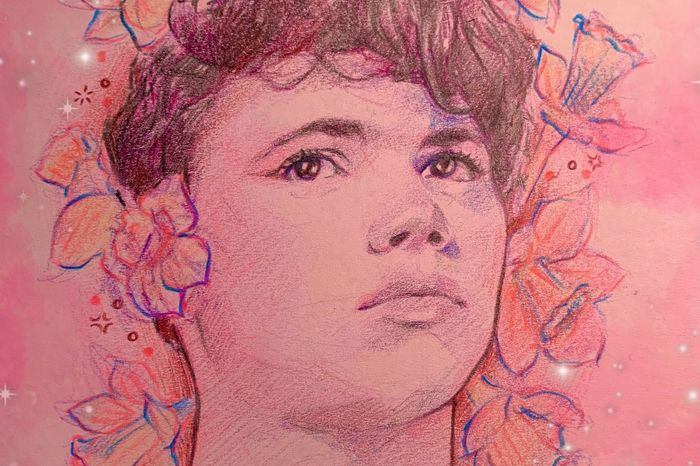Global Frames: Australia
Ruby Randall recommends must-watch films from the real-life land of Oz

In light of the recent additions to George Miller’s grease-slicked Mad Max series, and the 4k restoration of Crocodile Dundee, heads are turning to another Oz on the silver screen. Australia has produced truly iconic films, as well as some of the biggest names in the industry, like the inescapable Baz Luhrmann, whose early picture Strictly Ballroom (1992) I will later discuss.
As for a place to film in itself, Australia has offered us a cinescape of dreams. The outback’s awe-inspiring expanse against modern and early settled suburbia has been championed by both the darkly surrealist Picnic at Hanging Rock (1975), and Stephan Elliott’s irreverent queer classic The Adventures of Priscilla, Queen of the Desert (1994).
Before compiling this list, I wasn’t aware of the distinct Australianness to Aussie-made media; however, motifs like the tension between nature and urbanity, charmingly nasty comedy, and exceedingly awful tans have seduced my little movie-nut self to fall in love with all they have to offer, as I will now harp on about.
“Motifs like the tension between nature and urbanity, charmingly nasty comedy, and exceedingly awful tans have seduced my little movie-nut self”
Muriel’s Wedding (1994)
As the friend who introduced me to this film warned me, don’t let the title fool you. Muriel’s Wedding spills out of the kitsch romcom box it’s crammed into. Toni Colette stars as the dejected Muriel, whom we follow from an ABBA-plastered childhood bedroom to the big girl world of Sydney. Through a string of self-delusion and self-creation she constructs an imaginary empowered life aided by her best friend Rhonda’s liberating influence. As a result, the film is cemented in the struggle to find oneself within the constraints of oppressive systems. It is a wholly individual, harrowing, and cathartic watch, leaving any audience sympathising with their terrible heroine, because they can empathise with the trappings of terrible circumstances.
Picnic at Hanging Rock (1975)
Peter Weir masterfully creates what has to be the only horror film about a big rock that has panpipes as its creepy leitmotif. It’s not only a very beautiful film filled with Sofia Coppola-esque lingering on lace, sonnets, and parasols; but it also touches on a kind of primal terror that will be novel to any uninitiated viewer. Weir builds off of the original 1967 novel of the same name and takes its surreal, unexpected sexual undertones to their limit. The frustration of the characters in the repressive environment of a girls’ school in 1900 is palpable. The film almost makes us feel the baking sun, the sticky gloves, and the corsets poking between the students’ ribs. Forced lanquidity seeps through every gesture, and the prospect of the hanging rock and its unknown powers entices the audience’s interest just as it does the vanished girls. Aside from a potential secondary frustration coming at the two hour mark of screaming and panpipes, Weir adorns the narrativewith enough sublime horror to render the film a real triumph.
“Picnic at Hanging Rock almost makes us feel the baking sun, the sticky gloves, and the corsets poking between the students’ ribs”
Strictly Ballroom (1992)
Directed and co-written by Baz Luhrmann in his earliest endeavour, Strictly Ballroom is, in my opinion, one of his best films. It has a ridiculously predictable, yet simultaneously absurd storyline in which the world of ballroom dancing is overflowing with thematic controversy, generational trauma, psychological abuse and rampant elitism, which all swim amongst a visual sea of sequins and lycra. As with most iconic dancing films, Strictly’s main conflict surrounds the desire to “dance the way I feel, man,” but flips the trope upside down in having a beginner teach a professional dancer instead (think: “No one puts Swayze in the corner…”). The tongue-in-cheek vitality of Luhrmann’s world is irresistible, and it meshes perfectly with the camp glamour of televised ballroom dancing. At the same time, the Spanish-Australian identity of leading lady Fran (Tara Morice) drives the central beats of the film, allowing it to touch on real socio-economic issues and class lines in modern Australia within Luhrmann’s signature zaniness.
The Adventures of Priscilla, Queen of the Desert (1994)
Possibly leaving the best ’til last, we have Priscilla, Queen of the Desert. If you’ve ever wanted to see three straight guys play three drag queens – two of them being gay men and one being a trans woman – on a pimped-out Barbie bus in the outback, we have something in common. Priscilla asserts itself slap-bang in the middle of Australian identity, taking place over a cross-country road trip for a drag show that celebrates national iconography. It’s simultaneously hilarious, tender and full of raw human relationships, as well as being abundant with extremely fabulous costumes. However, like many other modern viewers, I couldn’t ignore the film’s reprehensible representation of a Filipina woman as a mail-order bride, which lets down the film’s otherwise sensitive exploration of issues like acceptance, gender identity, and diverse family units.
Want to share your thoughts on this article? Send us a letter to letters@varsity.co.uk or by using this form
 News / Cambridge student numbers fall amid nationwide decline14 April 2025
News / Cambridge student numbers fall amid nationwide decline14 April 2025 News / First candidate to announce chancellorship bid pledges to tackle bullying 12 April 2025
News / First candidate to announce chancellorship bid pledges to tackle bullying 12 April 2025 Lifestyle / First year, take two: returning after intermission14 April 2025
Lifestyle / First year, take two: returning after intermission14 April 2025 News / Rowing row continues as Oxford and Cambridge scrap women’s trial race9 April 2025
News / Rowing row continues as Oxford and Cambridge scrap women’s trial race9 April 2025 News / PETA urges Cambridge dictionary to change ‘derogatory’ rat definition11 April 2025
News / PETA urges Cambridge dictionary to change ‘derogatory’ rat definition11 April 2025




